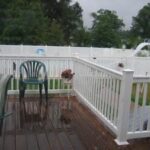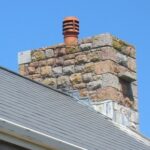Adequate ventilation is an extremely important part of the roof, with out the proper ventilation the roofing material will be deteriorated faster than it should making it necessary to re-roof sooner than the expected life. Improper ventilation may make it necessary for you to add additional roof vents to increase the air flow and extend the life of your shingles.
Excess heat is extremely destructive to the roof decking, underpayment and shingles, heat will reduce the life of your roof cutting years from the expected life. If you notice excess heat in your attic temperatures that exceed 120 degrees then you should consider adding more ventilation to your roof. This can be accomplished in several ways. You can add the standard roof vent, sometimes called turtlebacks, roof turbines, power vents or ridge vents. You can also add gable vents if they are none already installed.
This is a description of each vent with steps for installation.
1. Standard vents or turtle backs, these are square vents that have an external measurement of approximately 12″ x 12″ with a 4″ lip that lays flat on roof these vents have a 8″ round opening into the roof to allow heat to escape the attic.
To install these vents measure down from the ridge of the roof 3ft. and space them evenly across the roof depending on the number of vents you are installing. If shingles are already on the roof you will need to remove enough to allow for cutting a 8″ opening in the decking. Replace shingles starting at the bottom and relay until the exposure or the top of the slits in shingles for 3 tab (these slits are called rain lines) should be approximately even with the bottom of the opening you cut. Now place vent over opening and nail down at the top corners and high enough on bottom side to where the next shingle you install will cover the nails. Unless there is no other way to nail never leave nails exposed. Now cut and install remainder of shingles over the top of the lip on vent. It is preferred if the first shingle that is applies over the top of vent edge is at least even or a little below the opening you cut in roof. If this is all completed correctly you will not need to apply any roofing bull or chalking under vent .It will not leak when installed correctly.
2. Turbines and power vents are installed with the same process. The only difference is cutting an opening in decking according to the opening in the vent. And an electrical connection is needed for the power vent.
3. Ridge vents, as the name implies are installed along the ridge line if the roof. These vents come in a variety of materials, metal, a heavy mesh and plastic. The most popular is plastic. To install remove shingles along ridge enough to allow you to remove decking nails and cut a 2″ wide opening along the full length of both sides of the ridge. Replace singles completely and using utility knife cut back to expose the 2″ opening you cut in ridge. Install Ridge cap shingles on both ends of ridge to cover ares over the roof overhand, usually 3 to 4 ridge cap.
Now install the ridge vent, being careful to keep it straight. If you need to you may pop a chalk line. After the vent is installed you need to install ridge cap over the top of the vent just as you would normally from one end of vent to the other end. It really doesn’t matter which end you begin from, but if you can determine the direction from which you think the wind blows hardest, install with lap in the opposite direction.
Ridge venting has become the most popular form of venting the roof and usually provides adequate ventilation when installed on new roofs. It also provides a good finished appearance.
Following these guide lines to increase your ventilation should solve your problem of excess heat in the attic and help you get the most life from your shingles.





